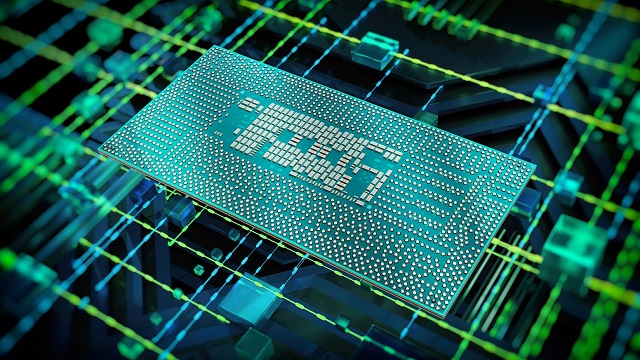Many people feel irritating with CPU overheating and reduced performance of their PCs. But fortunately, we are capable of reducing the high temperature of the PC. Now it is possible to control the temperature of the processor. Undervolting the CPU, you can now reduce the temperature of your system. Therefore you need to know how to undervolt CPU.
If you perform some more arduous tasks on your PC, the CPU of your device will be heated more. As a result, the device performance and battery life get reduced. This issue becomes more problematic and abundant if you run any bulky software or play any game. However, there may be other causes behind this, like poor ventilation, worn-out thermal paste on the chip, etc.
What is Undervolting?
Undervolting is a process to reduce the power of voltage being directed to the CPU. It is nothing but dynamic voltage scaling power management technique in computer system. If you give this more power, it becomes hotter. Similarly, providing less power helps to keep it cooler. It conserves more power. With the help of the undervolting method, you can increase the battery life. This process doesn’t cause damage to your processor, but overdoing it can make the system unstable.
It does not cause any effect on the performance of your system, even when you’re doing high-intensity activities like gaming. This procedure is as perfect as it sounds. However, the undervolting CPU is not so famous as GPU undervolting. The reason is that users are generally willing to overclock their CPU. You can undervolt a desktop processor by tweaking BIOS settings. But it is more complex compared to undervolting GPU. Besides, you cannot undervolt Intel CPUs for longer because of an exploit — Plundevolt.
If you are going to use Ryzen CPUs, undervolting might not work well till you use the Ryzen 5000-series CPUs. Undervolting Ryzen CPUs are a very complex, time-consuming job.
What is mean by Undervolt CPU?
This is a method that reduces the voltage to Central Processing unit for decreasing the power consumption and heat. The process doesn’t affect the performance of the CPU. In most cases, the PC motherboards enable tweaking the CPU voltage settings in BIOS.
Why Does Undervolting Work?
You may want to know why manufacturers set a fixed voltage on their processors when they work at reduced voltage. It is because each processor comes with its unique feature, and all are different.
If there are two same processors, these may have different results at those low voltages. Sometimes, a CPU works merely with the official voltage. The approved voltage means that it has a guarantee to work with the most significant percentage of processors. If you have patience, you can bring it down at least a little without any adverse effects.
Is Undervolting Dangerous?
It relies on what the things are that you consider as dangerous or what the risks are with which you feel comfortable. When you decrease the voltage of your CPU, it is not going to cause harm to it or any other components. But the issue is that your system may become unstable, due to which all your data will be lost. When you are going to undervolt, you should test the lower voltage setting and validate them. Ensure that you have done testing and validating lower voltage settings before doing something essential with the PC.
Along with potential data loss, there is another danger you can face during undervolting. It is that you may overvolt your processor mistakenly. If you apply extreme voltage more than the limit, it can permanently destroy your CPU. That is why you should ensure that you have turned the voltage dial in the correct direction.
Should You Undervolt CPU and GPU?
Users with laptops are recommended to undervolt. It is because there will not present any drawbacks. Instead of this, you can boost the life span of your device.
Whether you come with a small form factor pc case, it is recommended to undervolt. The reason is that it helps to maintain the optimal temperature except for any performance issues. If you are willing to use graphics-intensive apps such as gaming and crypto mining, then it is recommended to undervolt both CPU and GPU.
Undervolting vs. Underclocking:
Underclocking means reducing the clock speed, whereas undervolting indicates a decrease in the operating voltage. If you think about the performance, then Undervolting is better than it. The reason is that if you decrease clock speed, it can harm performance than reducing voltage.
When you undervolt without underclocking, it allows you to save power and energy except for causing any effect to the device’s performance. However, underclocking enables you to undervolt more.
We recommend you not to perform both. You should undervolt merely for improved performance.
Pros of Undervolting:
The advantages of undervolting are:
Less Energy Consumption:
If you are willing to decrease the energy amount consumed by your PC, then it is a great way to apply. This one is an effective way for those people whose PCs consume a lot of energy.
Lowers Heat Dissipated:
If you provide less voltage to your CPU, the amount of heat dissipated will decrease. When you reduce the heat dissipated, it helps to increase the life span of your CPU. The reason is that it helps to receive the rate of wear and tear.
More Battery Life of Laptop:
Whether you use a laptop that consumes a large battery, applying the process will provide you with additional minutes or hours of battery life. After applying the method, CPUs normally require less power to operate. It helps to decrease the pressure on the battery at the end.
Minimize Noise:
As soon as you reduce the amount of heat dissipated by the CPU, the fans will spin more slowly. Therefore, you will get less noise. While the fans spin slowly, these consume less amount of energy also. As a result, you will have a more effective system.
Increase the Lifespan of Computer Hardware:
Overheating is one of the significant reasons for hardware failures. As soon as the produced heat by the CPU is reduced, your PC becomes cooler. It helps to decrease the rate of hardware damages for temperature.
Doesn’t Affect Performance:
It increases the program execution speed. This process does not cause harm to the performance of your machine, like underclocking limits the clock speed of your processor. A few users said they had not experienced any performance drops on their devices.
How to Undervolt CPU Using Throttlestop:
Let’s first discuss the features of TechPowerUp Throttlestop. Usually, there are a lot of features that you can get available on the Throttlestop. But here, we will discuss only those you can apply to the recent processors.
Speed Shift:
Intel introduced the feature in 2016. With the help of this feature, you can set your processor to reflect the changes made to software-set clock speed. If you want, you can enable the feature from the ThrottleStop dashboard.
Disable Turbo:
When you enable the feature, it prevents CPU cores from increasing more than the base clock speed. Thus, the feature helps to save a lot of battery when you use any normal program.
BD PROCHOT:
Usually, when the temperature of your processor increases to 100-degree C, it may start throttling. Your processor will begin throttling when the laptop gets heated from inside when you enable the feature.
SpeedStep:
The function of SpeedStep is similar to the Speed Shift. You can use this feature for older processors than the Intel Skylake 2015. Therefore, you should use this only when you come with an older CPU.
C1E:
If you enable the feature, the throttlestop will power off the cores that rely on the stress. Thus, it helps to save a lot of battery while using your laptop.
Steps to Follow:
The process is as follows:
- In this case, you need to use the Throttlestop software. To use this, you should first download the software.
- Then, you should mark the “Speed Shift – EPP” option that is available under settings. Intel’s Speedshift technology allows it to perform smoothly and offer improved battery life.
- Hence, you should try to get a base value for temperature. First, you should tap on the “TS Bench” and begin the testing. When the test is running, you must observe the temperature values. Now, start the process of Undervolting.
- You should now tap on the “FIVR” option. After tapping on the option, you can see a menu appearing via which you can undervolt the processor.
- Now, your task is to hit the “OK – Save voltages immediately” option.
- After that, your job is to tap on the “Unlock Adjustable Voltage” option. Then, undervolt your CPU core, CPU Cache and Intel GPU by -100mV at starting. You should do this with the help of the Offset Voltage slider and then tap on the option apply.
- If the laptop you use crashes at -100mV, then try with -80mV. Now, you have to increase the value to 20mV continuously till the device is not becoming stable without any crashes. You should know that crashing is actually a part of it. Hence, the laptop will reboot itself. As a result, you are not required to get any tension.
- If the laptop is stable at -100mV, you should add -10mV. Repeat the step continuously till you are not getting any system crashes. The last stable setup is the limit of undervolt. Different laptops come with varying values of limit.
- Then, you should tap on the “Apply” and “OK” options.
- If you are willing, you can run a benchmark test with “TS Bench .”Hence, you should check the temperature values. The actual values need to be greater than the undervolted temperature values. If you face any error, you only have to boost the undervolt value by 10mV. After that, you should rerun this benchmark.
Further Steps:
Now, you get to know how you should reduce and keep Throttlestop in the notification area instead of Taskbar. Besides, you can also understand how you should launch Throttlestop at a start-up. It is because this way, you are not required to do it manually whenever you begin the PC.
- Your first job, in this case, is to uncheck the “Task Bar” option. After that, you are required to tap on the options. Now, you need to choose the “Start Minimized” and “Minimize on Close” options. Then, you should tap on the “OK” options.
- Next, when you are going to shut down Throttlestop, you can see this available in the notification area instead of in the Taskbar.
- Now, you should try to set up Throttlestop for the start-up process.
- After that, you have to head towards the Start menu and then open “Task Scheduler” from there. Then, you should tap on the “Create Basic Task” option that is available under the “Actions” bar on the right side.
- You should now type the “Throttlestop” name, and then you have to tap on the next option.
- Choose the “When I log on” option for the trigger, and then you are required to tap on the next option.
- After that, you should choose the “Start a program” option for Action purposes and then tap on the next option.
- You should now choose the Browse option and the Throttlestop.exe file that has been downloaded by you previously. Tap on the open option, and then you should select the “Open the properties dialogue for this task when I click Finish” option.
- Navigate to the properties tab and choose the “Run with highest privileges” option. Thus, you can complete the process.
It is the entire method to undervolt your CPU.
Undervolt CPU with Intel’s Extreme Tuning Utility (XTU):
Here, we will let you know the process of undervolting the Intel-Based CPU. If you face any trouble with the previous one, try this solution. You have to perform the steps that are given below.
You can apply the process for those Intel systems that run on Windows only. It is not applicable for all Intel CPUs because all processors don’t have undervolting capabilities. You should always keep the device fully charged and then back up all your information. In case anything happens wrong, you should restore your information.
Step 1: First, you should download Intel’s Extreme Tuning Utility (XTU) and then install this.
Step 2: Now, you should open the software. As soon as you open this, you can see a welcome screen appearing. This display shows you the information related to your hardware (processor, memory, motherboard, etc.)
Step 3: You should turn on the core voltage monitoring system by going to the system monitoring section. If you are willing to turn on this, you should tap on the available wrench at the bottom right corner.
Step 4: After that, your job is to scroll the page down, and then you should check the box for enabling the core voltage. Next, you can see a new core voltage monitor appearing on the home display.
Step 5: Your task now is to get out of the system monitoring display configuration and return to the home. You should keep in mind the default voltage without Undervolting.
Step 6: After that, your job is to tap on the Advanced tuning option. It is available in a list on the left part of your display.
Step 7: Move your cursor over the Core Voltage Offset, deduct it by a small voltage of .02V, and click apply.
Step 8: You can run CPU stress testing when your device reaches -0.001V in a stable state. It will help you to check the problems.
Step 9: You need to reduce the voltage by 0.005V till your system doesn’t crash or perform abnormally.
Step 10: After settling your machine to the least stable voltage, ensure that you successfully completed undervolting your CPU. When the method ends, you can see a few drastic changes. For instance, you can see changes in battery life performance, less fan noise, etc. Thus, you can prevent your system from overheating.
How to Undervolt CPU Through the BIOS:
We have given here the process of undervolting via the BIOS.
- Hence, the correct BIOS version is the first thing that is essential for your board. If necessary, check if the board has the required BIOS update online. Once you have reached the actual BIOS, you should first reboot your computer. Then, your task is to go to the BIOS settings.
- When you enter into the BIOS, you must look for the “Precision Boost Overdrive” menu. You can get this menu available generally in overclock settings under AMD Overclocking. However, it can vary and rely on the motherboard. If you use MSI boards, you should tap on the OC menu that is available on the left side. After that, your task is to tap on the “Advanced CPU Configuration” option. Next, you are required to choose the “AMD Overclocking” option. When you enter the AMD Overclocking menu, you need to find the Precision Boost Overdrive.
- As soon as you see the “Precision Boost Overdrive” option available, you need to tap on that option. Then, your job is to choose the “Advanced” option. You have to set the “PBO Limits” to ‘disabled’ mode as you are not willing to overclock the CPU. However, if you want, you can run this at the default power profile with a lower voltage. In case you have enabled the option, it may happen that your processor will go over the default power limit. Thus, your system can deliver enhanced performance, but it will become hotter.
- When you have disabled the PBO limits, you must tap on the “Curve Optimizer” option. Now, your task is to set the option to all cores, for starters. After that, you should turn the “All Core Curve Optimizer Sign” option into negative as you undervolt your CPU now. You should tap on the “All Core Curve Optimizer Magnitude” option and set the value to the maximum value of your board. Generally, the value is -30, and it should be the beginning point.
- As soon as you have finished doing all of these, you should face this BIOS setting. Then, you have to go for the testing. You should first boot your windows successfully. Whether your Windows crashes when the welcome display appears or soon after, then you should lower the optimized value of the curve. After that, you should try this again. Every stepping represents about 3-5mV value, due to which it is better to reduce the value for around 2-3 steppings during every testing cycle.
- If you find your system capable of booting without issues, you can run a CPU benchmark. Hence, you can take the help of Cinebench to check if the processor can handle the undervolt while under load.
- If this method works, then go for some Prime95 and real-world testing in games. One hour is enough for this testing procedure.
- The games Shadow of the Tomb Raider and Cyberpunk 2077 are Very CPU intensive.
- Total War titles or current Assassin’s Creed games like AC: Valhalla or AC: Odyssey are some titles ideal for CPU testing.
- Have you managed to run a successful Cinebench, but Prime95 is displaying an error? If yes, then you are capable of detecting the core that failed. After that, your job is to switch to each core curve optimizer.
- Leaving the same stepping for core works fine, but lowering it further may lead to some error in Prime 95.
- If you find everything fine, you should achieve improved scores in multithreaded apps with lower thermals. However, you will get similar performance for games and other lightly threaded apps.
How to Undervolt a CPU Using a Software Utility:
Intel Extreme Tuning Utility (XTU) is one of the two popular utilities that avid undervolters use to wean their CPUs off the juice. Further, Intel Extreme Tuning Utility (XTU) is ideal for those who use an Intel CPU. Intel Extreme Tuning Utility (XTU) is not user-friendly. It has multiple settings and sub-menus that can be more confusing for a newbie.
When you are going to undervolt, you should take care of a small number of settings. If you’re using XTU, you will get all of these available under the “core” section of the app. The “core offset voltage” is the thing hence that is most essential.
The latest processors that are available in laptops do not come with a static voltage. Your system manages the voltage depending on the amount of load in the processor. It is also one of the reasons why undervolting won’t get effective results as processors undervolt themselves when idle. You can change the minimum and maximum voltage range, but you need to manage the voltage offset to do this.
Sometimes, the Core Offset Voltage can be greyed out; that happens for a security patch. Those who are Original Equipment Manufacturers or OEMs have implemented this. So it can affect some laptops and prebuilt systems while undervolting.
How to Undervolt CPU Manually:
You can see multiple times when people create their systems; they install their operating system & programs, and other things. However, a few tricks are there that you can follow to receive more improved performance and reduce the temperatures.
The process of setting and undervolting the CPU’s Vcore enables you to decrease the processor’s temperature significantly. Besides, it also helps to run fans more slowly. As a result, you can get an overall quieter system.
- Your first job is to download CPU-z. Here, you can see the details of frequencies and voltages at which your CPU, Memory, and other components run. Head towards the CPU tab where you can see ‘Core Voltage.’
- The Core Voltage set by Intel is to match correctly at the stock frequency. But your processor can run smoothly at some lower voltage; therefore, it is possible to undervolt it manually to keep your system stable and operate at the lower temperature.
- Next, your task is to download another program that we know as OCCT. OCCT is a kind of stress testing program that puts the CPU through various paces, and it simulates a maximum level of stress to ensure the processor is stable in real-time scenarios.
- As soon as you complete downloading, you must run the program. Then, you have to choose the ‘Linpack mode’ option and then choose the ‘Automatic’ option. Next, your task is to run the test for 30 minutes along with an ‘Idle Period’ of zero. You might have to choose the ‘Use all Logical Cores’ option, but it relies on if the processor contains Hyperthreading. After that, your job is to tap the ‘On’ option. Now, allow your device to run for about 30 minutes. As soon as you end the test, you can see the maximum temperatures at which your processor cores have reached during the time. It is available on the right side of OCCT.
- After completing, you may want to reboot the PC and then enter the BIOS. You have to tap on delete hence to do this. After that, your task is to move to the ‘Overclock’ settings. You may find the option as a different name on your motherboard. You should look at the BIOS to see this. When you enter the overclock settings, you have to scroll down the list till you are not getting the ‘CPU Core Voltage’ or ‘CPU VCore’ options. You should change a ‘mode’ setting to manual for changing the core voltage.
- Set the core voltage value to the actual value seen in CPU-z at starting. Doing this will help to lock the voltage to that value. After that, your job is to tap on the F10 button to save the settings. Then, you should get out of the BIOS and restart the PC as usual.
- You are capable of rerunning the OCCT test. Perform this step now for some hours to ensure that your device is stable. You can find temperatures a little bit lower. Whether your system is stable, you should reduce your volts continuously. Keep doing this in small increments like 0.025v until the system does not become stable again. Thus, you are capable of getting the lowest voltage at which your system remains stable.
- At last, you have to return to CPU-z. Now, the core voltage has the value that you have set before. When you rerun OCCT, you find your temperature a little bit lower than earlier.
The Bottom Line:
The process of undervolting helps people to find the accurate value of voltage to power the processors. There is no need to keep the voltage that the laptop manufacturer sets. Therefore, you can set voltage as low as you want, but without making your system unstable and facing BSODs. When your system works at a lower voltage, it consumes low power also. Try the methods mentioned above to increase your device’s battery life and enhance the PC’s performance. If you know some more details about hardware, you can try a few extra things.
Frequently Asked Questions:
- Is it safe to undervolt a CPU?
Yes, it is safe to undervolt your CPU. It doesn’t have any physical/electrical mechanism that becomes harmful for your processor.
- Does undervolting CPU help to boost the performance of your system?
The process helps to avoid CPU throttling, and thus it allows your laptop to run for a long time for gaming. However, you will not get any improvement in the performance of gaming.
- Does undervolting reduce CPU life?
No, it doesn’t reduce CPU life. Instead, it helps to decrease the power being directed to your processor. Thus, your CPU becomes cooler. When you apply high power to the processor, it becomes hotter. However, this process won’t make any changes in the performance of your PC, even during gaming and other high intense works.







